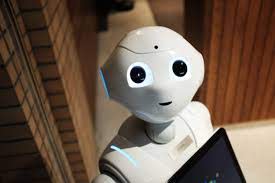Source: fortuneindia.com
The world had been approaching the Industry 4.0 revolution and Big Data analytics even before the pandemic. However, the outbreak of Covid-19 and the new world order thereafter has not only brought advancements in health tech but has also ensured its involvement in other sectors such as manufacturing, logistics, retail, banking, education, hospitality, and others.
As we humans have withdrawn into our homes, we are seeing technology coming to the forefront and supporting us in performing mundane, repetitive, and risky tasks. People have been forced to quickly adapt to new-age technologies to maintain the new normal.
Direct consultation, caregiving, and nursing has become highly challenging while doctors, nurses, and healthcare workers are unable to provide the needed care without the risk of getting infected by the quarantined patients. Health workers not only risk being infected but could also infect patients.
While Covid-19, like many other viruses, may fade away due to an effective vaccine or otherwise—it is certainly not going to be the last such pandemic striking mankind. Thus, we must leverage technology and build the foundation for a better tomorrow.
Healthcare automation
Like the precision manufacturing sector, the healthcare industry faces major challenges of high probability of human errors, tedious processes and systems, lack of skilled professionals, long shifts, and more time being dedicated to administrative work. These add to fatigue and stress in healthcare professionals, diluting the time of patient care. However, with technological advances, there is scope for systems to be automated and streamlined to support healthcare professionals. This gives more time for healthcare workers to do what is most important—providing proper care to the patients.
Robotisation allows surgeons to better perform extremely complicated procedures—because of increased dexterity coupled with advanced HD 3D vision and precise manoeuvrability. This provides real-time connectivity to the surgeon of the area under surgery via visual, auditory, tactile, and haptic means.
Robotic surgery also has an added advantage for the patient—reduction in the size and number of incisions, discomfort, hours in hospitals, and minimised collateral damage. Currently, most surgical robots assist experienced surgeons. Yet, it has its benefits. For example, a slip of the hand can be avoided through 3D imaging and augmented reality in real time. In the coming years, robotic surgery will undoubtably find more advancement and significance.
Robotics is the powerful tool in the fight against Covid-19
Nurses, doctors, and other healthcare professionals are at the front lines in the fight against Covid-19. Not only are they needed to treat sick patients, but they also put themselves at high risk of contracting the disease themselves. These risks become more hazardous when shortage of personal protective equipment (PPE) leave healthcare workers no alternative but to reuse PPEs. The implementation of robotics here could immensely help combat the Covid-19 outbreak.
Having more robots means there is less person-to-person contact, which leads to fewer healthcare workers falling ill. This also reduces community transmission, while consuming fewer supplies of PPE. The use of telemedicine allows doctors and nurses to communicate with patients without the risk of infection. These “virtual-calls-on-wheels” platforms allow for communication with patients, visual inspection, and driving around a room to view equipment and monitors.
Robots are already being used in various hospitals across the country. They prevent health workers from getting infected inside the quarantine zone. They can autonomously navigate inside the isolation ward to transport and dispense food and medical supplies, engage the patients, and initiate video conferencing between patients and the physician/caregiver from a remote location. These autonomous robots can also disinfect the used items and the premises using ultra-violet radiation and disinfectants like sodium hypochlorite or electrostatic spray.
While the usability, clinical integration, and scaling up remain a challenge at large, it will take efforts from scientists, engineers, and medical professionals to make this a reality. We need to invest in new digital infrastructure and vital projects to innovate for a better tomorrow. The Covid-19 outbreak has taught the world a number of lessons, an important one being the use of technology at its full potential to build a robust healthcare system.


